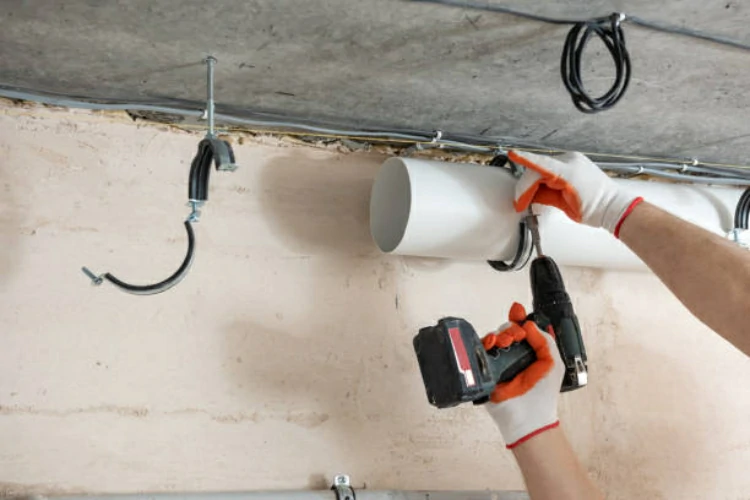Introduction
PPH (Polypropylene Homopolymer) pipe manufacturing involves intricate processes and continuous technological advancements to ensure product quality, efficiency, and sustainability. This article explores the manufacturing process of PPH pipe and the evolving trends in technology driving its development.
Manufacturing Process of PPH Pipe
1. Polymerization: Creating Polypropylene Resin
The manufacturing process of PPH pipe begins with polymerization, where propylene monomers undergo a polymerization reaction to form polypropylene resin. The resin acts as the raw material for PPH pipe production and undergoes synthesis through various techniques like bulk, solution, or gas-phase polymerization. Polymerization conditions, including temperature, pressure, and catalyst selection, are carefully controlled to achieve the desired molecular structure and properties of the polypropylene resin.
2. Extrusion: Shaping Polypropylene Resin into Pipe
After production of the polypropylene resin, it undergoes extrusion to shape it into PPH pipes. In this process, the resin melts and passes through a die to create a continuous profile with the desired dimensions and characteristics of the pipe. Manufacturers may utilize various extrusion techniques, such as single screw or twin-screw extrusion, depending on the specific requirements of the PPH pipe. They can incorporate additives like stabilizers, antioxidants, and pigments during extrusion to enhance the performance and appearance of the final product.
3. Cooling and Sizing: Solidifying and Forming Pipes
After extrusion, the freshly formed PPH pipes undergo a cooling process to solidify the molten material and maintain dimensional stability. Cooling methods may include air or water cooling, depending on the pipe size, wall thickness, and production rate. Once cooled, the pipes are passed through sizing tools to ensure uniformity and accuracy of dimensions. Sizing equipment may utilize vacuum or pressure to control the diameter and roundness of the pipes, resulting in precise and consistent products suitable for various applications.
4. Quality Control and Testing: Ensuring Product Integrity
During manufacturing, rigorous quality control measures and testing protocols ensure PPH pipe integrity and performance. This includes visual inspection, dimensional measurements, and mechanical testing for parameters like tensile and impact strength. Advanced methods like spectroscopy and microscopy analyze material properties, identifying defects. Adhering to strict standards ensures PPH pipes meet regulatory requirements and customer expectations.
Technological Advancements in PPH Pipe Manufacturing
1. Advanced Materials and Additives: Enhancing Performance
Technological advancements in PPH pipe manufacturing focus on developing advanced materials and additives to enhance product performance and durability. Researchers continually explore new polymer formulations, reinforcement materials, and additive combinations to improve properties such as strength, flexibility, and chemical resistance. Furthermore, manufacturers may incorporate innovative additives to PPH pipes, imparting antimicrobial properties, UV resistance, or flame retardancy, thus expanding their applicability in diverse environments and industries.
2. Process Optimization: Improving Efficiency and Sustainability
Continuous process optimization is a key trend in PPH pipe manufacturing, focusing on efficiency, waste reduction, and environmental impact. Manufacturers invest in advanced machinery, automation, and CAD software to optimize extrusion processes and streamline workflows. Minimizing energy consumption, water usage, and emissions align with global sustainability initiatives, ensuring environmental stewardship in PPH pipe manufacturing.
3. Smart Manufacturing and Industry 4.0 Integration: Embracing Digitalization
Smart manufacturing technologies and Industry 4.0 principles revolutionize PPH pipe manufacturing. IoT devices, sensors, and data analytics platforms collect and analyze production data in real-time, optimizing equipment performance and detecting defects. Advanced modeling tools enable virtual prototyping and process optimization, speeding up product development cycles and reducing time-to-market for innovative PPH pipe solutions.
Conclusion
In conclusion, the manufacturing process of PPH pipe involves sophisticated techniques and continuous technological advancements to ensure product quality, efficiency, and sustainability. By leveraging advanced materials, process optimization, and digitalization, manufacturers can enhance the performance, durability, and environmental friendliness of PPH pipes. As the industry evolves, ongoing research and innovation will drive further improvements in PPH pipe manufacturing, meeting the evolving needs of construction, infrastructure, and industrial sectors worldwide.
Contact
IFAN is a professional manufacturer with 30 years of experience, dedicated to producing high-quality plastic pipes, fittings, and valves. Our products include brass valves, PPR valves, as well as various pipes and fittings to meet different customer needs. Whether you need plumbing and drainage pipes or valve products, IFAN can provide a diverse range of high-quality, cost-effective products to support your projects. Below is our contact information.
We will reply your email or fax within 24 hours.
You can call us at any time if there is any question on our production.
For more information,pls visit our webside https://www.ifanplus.com/
Pls Mailto: [email protected]






